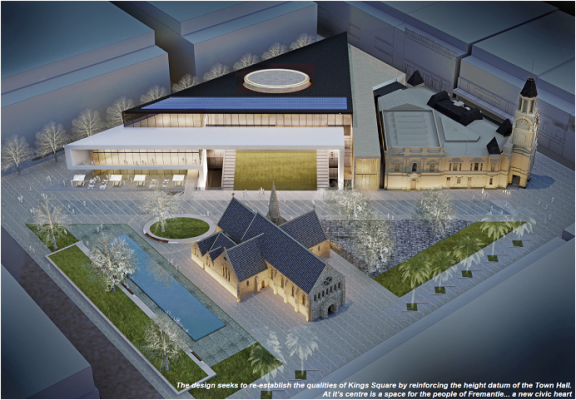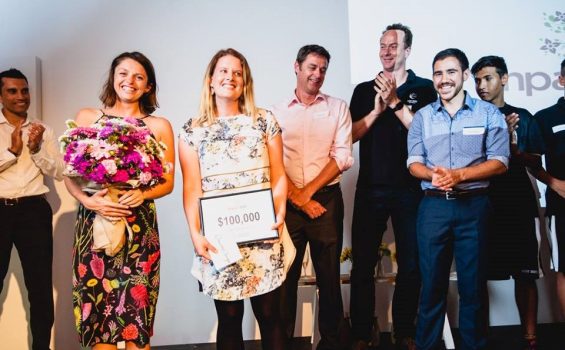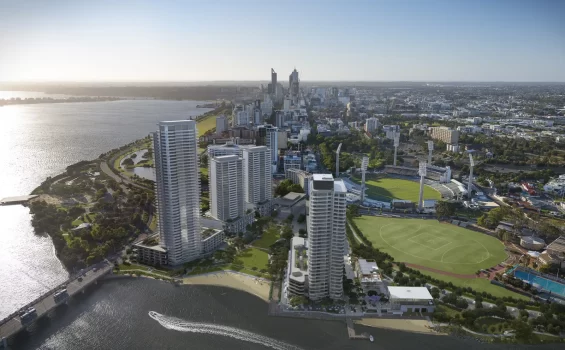
Walyalup Koort, looking back on the future of Freo
30 July 2021
With the Walyalup Civic Centre nearing completion, the new playground looking great and the public spaces around the newly renamed Walyalup Koort taking shape, it’s timely to go back and revisit the reasons why all of this was necessary in the first place.
The Fremantle Council recognised back in 2003 the need to deal with significant structural and maintenance threats associated with our old administration building.
The council under then Mayor Peter Tagliaferri moved a motion to investigate alternatives to what was described in the council report as a building which was “outdated and incurred considerable annual maintenance costs”. The report also stated, “a considerable amount of money would be required to upgrade and refurbish the building to current acceptable standards”.
The following year the council established a Civic Area Redevelopment Project to look at a precinct-wide development of Kings Square, including the City-owned buildings and the privately-owned Myer building.
In 2011 the council revisited these earlier plans with a fresh new approach to the Kings Square precinct to kick-start Fremantle’s much-needed revitalisation.
Around that time, Fremantle’s local economy was in decline and our inner-city population had stagnated. This was reinforced when Myer closed in 2013, one of many large format retailers forced to scale down operations in the face of the growing emphasis on online shopping and a decline in the dominance of department stores.
The anchor tenant in the Queensgate complex, Hoyts Cinemas, advised in 2012 that it would not renew its lease, and no other cinema chain could be found to take it over. The Queensgate building had a failing roof and air conditioners which required significant funds to repair. The City considered an option to renovate the cinemas into offices so they could be re-purposed for lease, but the cost of doing this was $14 million.
Action was needed to reverse Fremantle’s economic malaise and attract more people to live and work here. In 2010, council led by Mayor Brad Pettitt recognised that most of Perth’s leading developers had become disenfranchised with Fremantle as a place to invest.
The council sought to turn that negativity around by developing new economic development and planning strategies and promoting a new vision to the development industry. The rejuvenation of Kings Square was at the heart of the City’s plan to do just that.
Following an innovative ‘Citizens Jury’, the Kings Square Urban Design Strategy was adopted by the council in June 2012. These community-inspired design guidelines, along with a comprehensive business plan, were then used as the brief for the Kings Square Architectural Design Competition.
The competition was promoted nationally and internationally in 2013 and conducted in accordance with the Australian Institute of Architects Competition Guidelines. It attracted more than 60 entries from around the world. The final winning design by Fremantle-based Kerry Hill Architects, along with other entries, formed part of a public exhibition in 2014.
The council then worked to further refine the design, put our finances in order to fund the project and entered into a commercial agreement with Sirona Capital to leverage their $220 million investment to redevelop old Myer and Queensgate sites as part of the broader renewal of Kings Square.
It’s a fact that Sirona would not have invested in the Kings Square Renewal project unless the City also committed to building new civic and community facilities in the square. The council had to put skin in the game to kick-start the necessary investment in Fremantle.
The old administration building suffered from concrete cancer, had significant asbestos contamination and did not meet legal disability access requirements.
A report prepared in 2012 showed the City would have to spend $28 million on the old building just to meet the minimum required standards, and more than $50 million to properly refurbish it and add new extensions.
It was cheaper to knock it down and build a new, better building.
The improved energy efficiency and reduced maintenance costs on the new building will also deliver significant ongoing operational savings.
The original budget to construct the Walyalup Civic Centre was $41.3 million. That was increased to $42.6 million to allow for the installation of new fire protection measures and other improvements in the town hall that were not part of the original scope.
Despite the construction delays and other impacts due to COVID-19 and the collapse of the head contractor Pindan, the project remains on track to deliver on its original objectives.
From the beginning, the construction of the Walyalup Civic Centre has been funded using a combination of existing savings, asset sales and low-interest loans. Because of prudent financial planning it does not rely on increases in rates.
The 10-year financial plan adopted in 2015 showed the City would deliver long-term benefit from this essential, ‘once in a generation’ investment, and the knock-on developments it would generate.
We are already seeing the boost this project has given central Fremantle, with new investments in residential apartments, commercial properties and hospitality venues – Liv Apartments, Little Lane, M/27, The Social, the Manning Buildings, hArbour Fremantle, the Old Synagogue, Warders Hotel and Emily Taylor and more.
The increase in commercial and residential property developed as a result of Kings Square will generate more rate revenue for the City by significantly increasing the number of people living and working in the city centre, a core strategy in developing a ‘seven day per week’ economy..
Less than half the floor space of the Walyalup Civic Centre will be taken up by the operations of the City and its staff, with the majority of the building to be used for community facilities and commercial and retail spaces. Those commercial and retail spaces will provide an additional source of revenue for the City.
The Walyalup Civic Centre will be a spectacular building, with a stunning modern library, fully accessible toilets and change facilities, a state-of-the-art information and customer service centre, a wide range of community meeting rooms and gallery and exhibition spaces integrated with the town hall.
It will also be one of the most energy efficient buildings of its size in Australia and showcase a wide array of sustainability features that will also help reduce operational costs. But most importantly, it will bring people back to the civic heart of Fremantle and make it a safer, more attractive and vibrant place.
Now that we’re almost at the finish line, it easy to forget the years of community engagement, investigations, reports, consultations, debates and deliberations that took place before we gave the green light to one of the most significant projects in the city’s history.
The City’s commitment to a new civic building and the renewal of Kings Square leveraged Sirona’s investment in new offices spaces that now accommodate more than 1700 state government employees – providing a huge boost to the local economy and acting as the catalyst for further private sector investment.
Without the Walyalup Civic Centre the revitalisation of central Fremantle we are currently witnessing simply would not be happening.
As of May 2021, the City has expended $38,311,347 on the Walyalup Civic Building. A new building contract has been awarded to complete the project after the collapse of original builder Pindan and the building is expected to be completed prior to the end of this year.
References
- Why is the City investing in Kings Square?
- Council refines Kings Square civic building plan – adds new community features
- New 21st century Fremantle Council building gets heritage tick of approval
- Fremantle city centre redevelopment to underpin port city’s economic future


So it’s been asked at council meeting many times with no answer but how much revenue will the building return ? As I recall precovid the best offer was 5 years rent free and council spend 500k on fitout however even that deal had fallen over . With the amount of vacant commercial space in Fremantle ( increasing every day ) how are you going to attract tenants ? What was the projected income in the business case that was touted as paying the loans down ? How will it be funded now ?